Bus Transportation Industry in China
1. Introduction
1.1 Brief overview of the bus transportation industry in China
The bus transportation industry in China is an integral part of the country's vast transportation system. With a population of over 1.4 billion people and rapid urbanization, China relies heavily on buses to meet the transportation needs of its citizens. The industry plays a crucial role in connecting people in both urban and rural areas, providing a convenient and affordable mode of transport.
China's bus transportation market is one of the largest in the world, characterized by a diverse range of bus types and services. The industry encompasses various segments, including public transportation, intercity travel, tourism, and school buses. Bus fleets in China comprise both traditional fuel-powered buses and an increasing number of electric and hybrid buses as the country strives to reduce pollution and promote sustainable transportation.
Major cities in China, such as Beijing, Shanghai, and Guangzhou, have extensive bus networks that serve millions of commuters daily. These networks are continuously expanding to cater to the growing urban population and address traffic congestion challenges. Additionally, China has seen the emergence of new bus transportation models, including ride-sharing services and on-demand shuttle buses, leveraging technology to enhance efficiency and improve passenger experience.
The bus transportation industry in China operates under government regulations and policies aimed at ensuring safety, efficiency, and environmental sustainability. The government has implemented measures to promote the adoption of electric buses, incentivizing bus manufacturers to develop and produce greener vehicles.
Overall, the bus transportation industry in China is a critical component of the country's transportation infrastructure, providing an accessible and affordable mode of travel for millions of people. It continues to evolve with advancements in technology and sustainability, shaping the future of public transportation in China.

1.2 Importance of the industry in China's transportation system
The bus transportation industry holds immense importance in China's transportation system due to several key factors. Here are the reasons why the industry plays a critical role:
1.2.1 Accessibility and Affordability
Buses provide a widely accessible and affordable mode of transportation for a vast population in China. With a large number of routes and extensive networks, buses reach areas where other transportation options might be limited. They cater to diverse passenger needs, including daily commuting, intercity travel, and rural connectivity. The affordability of bus fares makes them an essential choice for many who seek economical transportation.
1.2.2 Mass Transit Solution
China's population is highly concentrated in urban areas, leading to significant traffic congestion and strain on transportation infrastructure. Buses offer a mass transit solution, accommodating a large number of passengers at a time. They help alleviate traffic congestion by reducing the number of individual vehicles on the road, contributing to smoother traffic flow and reduced travel times.
1.2.3 Bridging Transportation Gaps
In regions with limited access to rail or subway networks, buses bridge the transportation gaps and provide vital connectivity. They serve as feeder systems, transporting passengers to and from major transit hubs such as railway stations and airports. Buses also play a crucial role in connecting rural areas to urban centers, ensuring mobility and accessibility for people residing in remote locations.
1.2.4 Environmental Sustainability
The bus transportation industry in China has been undergoing a significant transformation to address environmental concerns. The adoption of electric and hybrid buses has gained momentum, reducing carbon emissions and contributing to improved air quality. By transitioning to cleaner and more sustainable technologies, the industry supports China's commitment to environmental protection and the reduction of greenhouse gas emissions.
1.2.5 Employment and Economic Growth
The bus transportation industry creates substantial employment opportunities in various sectors, including bus manufacturing, operations, maintenance, and support services. It generates economic growth by fostering a supply chain of bus-related industries, stimulating investment, and contributing to local and national economies.
1.2.6 Social Inclusion and Mobility
Buses play a crucial role in ensuring social inclusion and mobility for diverse segments of the population, including senior citizens, students, individuals with disabilities, and low-income communities. They provide a means of transportation that is accessible to all, regardless of individual circumstances, promoting equal opportunities for mobility and participation in society.
2. Insight
2.1 Size and growth of the bus transportation market in China
2.1.1 Largest Segment by Fuel Type – HEV
The major drivers for this market are increasing gasoline prices, better fuel economy than diesel counterparts, and stringent environmental regulations to reduce air pollution.
2.1.2 Fastest-growing Segment by Fuel Type – BEV
Battery electric buses accounted for most sales across all fuel segments in China. It is the fastest-growing segment in fuel type due to the adoption of electric mobility to cut carbon emissions.
2.1.3 Market Trends
Most state and metropolitan transport authorities are encouraged to increasingly include clean public transport options in their regional development plans by the growing public awareness of air pollution, climate change, and rising diesel prices over time. Compared to buses powered by petrol or diesel, electric buses provide passengers with more comfort. Compared to conventional diesel buses, the NVH levels in electric buses are low, improving passenger comfort.
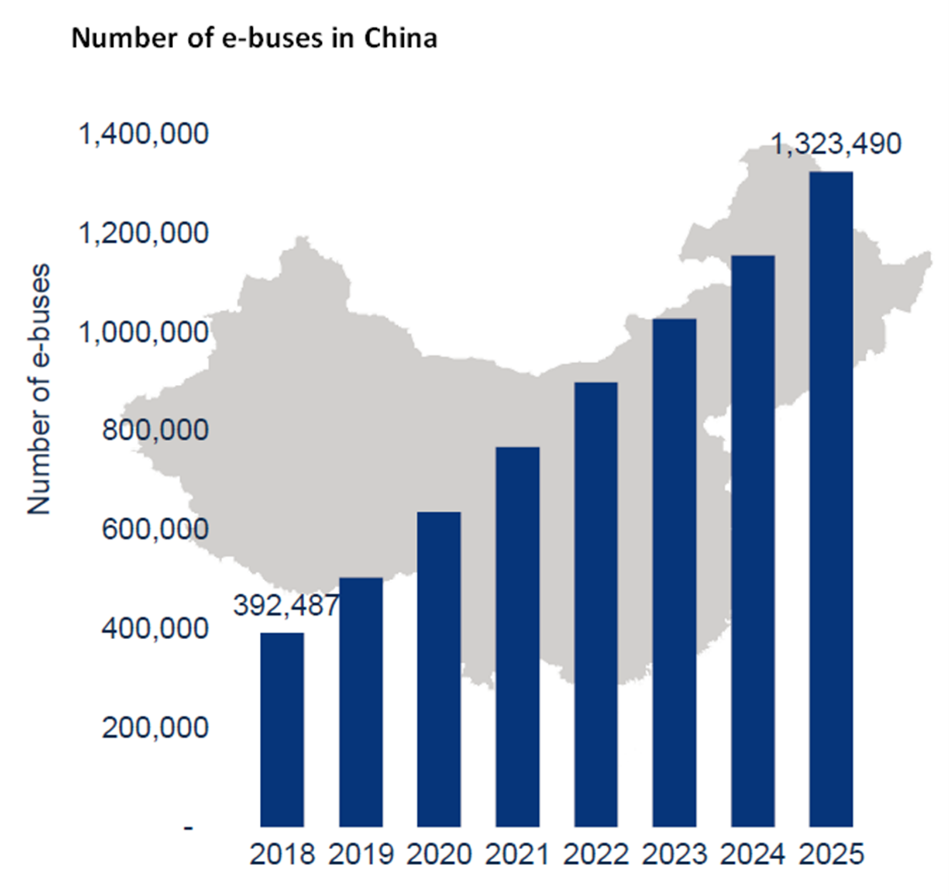
An electric bus costs USD 750,000, compared to USD 500,000 for a typical diesel transit vehicle. Despite their higher initial costs, electric buses are frequently a cost-effective alternative. They offer lower operating costs from lower maintenance and fuel expenditures, as well as greater cost predictability due to the relative stability of electricity prices compared to those of fossil fuels.
Electric buses are becoming more financially viable because of supportive legislation, which results in lower maintenance costs and much lower fuel prices. Manufacturers of electric buses assert that these vehicles more than makeup for their higher initial cost through fuel savings of USD 400,000 and maintenance savings of about USD 125,000. The vehicle's lifespan is increased, maintenance expenses are decreased, and passengers are provided with comfort due to the minimal vibrations and moving mechanical parts during operation. Compared to diesel-powered buses, electric buses help cut 81–83 percent of maintenance and operational expenses. As a result, China may continue to experience an increase in the adoption of electric buses during the projection period, at a CAGR of 16.72%.
2.2 Key players and major competitors
2.2.1 Yutong Group
Yutong Group is one of the leading bus manufacturers in China and holds a significant market share. Known for its diverse product portfolio, including traditional buses, electric buses, and hybrid buses, Yutong Group has a strong presence both in the domestic and international markets. The company has gained recognition for its technological innovation and commitment to sustainable transportation solutions.
2.2.2 BYD Company Ltd
BYD is a prominent player in the Chinese bus transportation industry, specializing in electric buses and battery technologies. The company has established itself as a global leader in electric vehicles and has made significant contributions to the development and adoption of electric buses in China. BYD's buses are widely used in public transportation systems across the country.
2.2.3 Zhongtong Bus Holding Co., Ltd
Zhongtong Bus is another major player in the Chinese bus transportation market. The company focuses on manufacturing a range of buses, including city buses, intercity buses, and new energy buses. Zhongtong Bus has a comprehensive sales and service network, catering to both domestic and international customers.
2.2.4 King Long United Automotive Industry Co., Ltd
King Long is renowned for its production of high-quality buses, including luxury coaches, city buses, and electric buses. The company has a strong market presence in China and has successfully expanded its reach to international markets. King Long's commitment to product innovation and customer satisfaction has contributed to its competitive position.
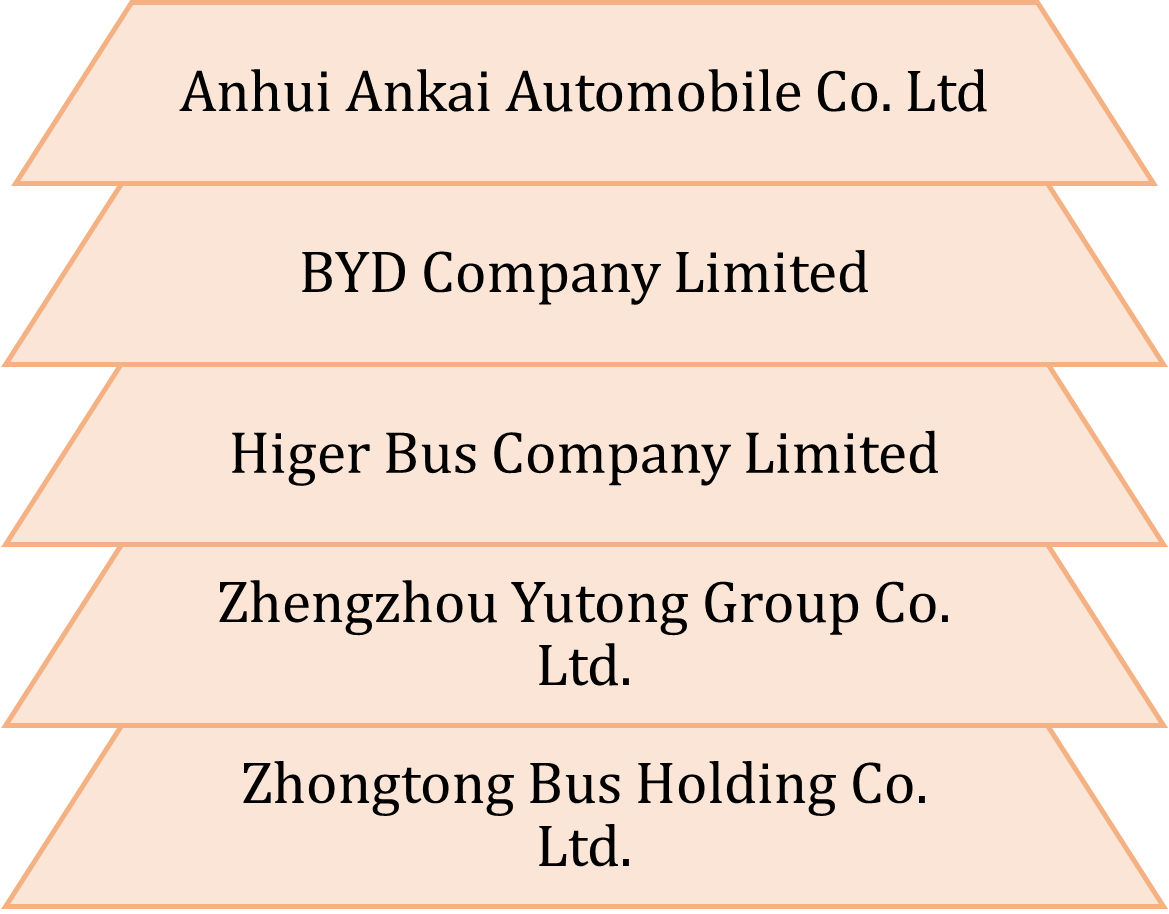
2.2.5 Xiamen Golden Dragon Bus Co., Ltd
Golden Dragon Bus is a prominent manufacturer of buses in China. The company offers a wide range of buses, including city buses, coaches, and electric buses. Golden Dragon Bus has a reputation for its advanced manufacturing processes, product reliability, and customization options, catering to various customer requirements.
2.2.6 Higer Bus Company Limited
Higer Bus is a key player in the Chinese bus transportation market, specializing in the production of luxury coaches, city buses, and electric buses. The company focuses on technological advancements and emphasizes safety and comfort features in its products. Higer Bus has a strong domestic presence and has expanded its operations to international markets.
2.2.7 Anhui Ankai Automobile Co. Ltd
This company has professional manufacturing and sales enterprise for all kinds of high-end and medium-end large, medium, and light buses.
2.2.8 Zhengzhou Yutong Group Co. Ltd.
Yutong has delivered 5,917 buses and coaches. Nowadays, more and more Yutong buses can be seen in France, UK, Slovakia, Norway, Iceland and other European countries.
2.3 Government policies and regulations governing the industry
The bus transportation industry in China operates under a robust framework of government policies and regulations aimed at ensuring safety, efficiency, and environmental sustainability. These policies play a crucial role in shaping the industry's operations and development. Here is an overview of the key government policies and regulations governing the bus transportation industry in China:
2.3.1 National Public Transportation Development Policies
The Chinese government has formulated national-level policies to guide the development of public transportation, including bus services. These policies emphasize the importance of improving transportation efficiency, reducing congestion, and providing accessible and affordable public transportation options to citizens.
2.3.2 Fuel Efficiency and Emission Standards
To address environmental concerns and reduce pollution, the Chinese government has implemented strict fuel efficiency and emission standards for buses. These standards apply to both traditional fuel-powered buses and new energy vehicles, such as electric and hybrid buses. Compliance with these standards is crucial for bus manufacturers and operators, encouraging the adoption of cleaner and more fuel-efficient technologies.
2.3.3 Electric Bus Promotion and Incentives
In recent years, the Chinese government has prioritized the promotion of electric buses to combat air pollution and reduce reliance on fossil fuels. Various incentives and subsidies are offered to bus manufacturers and operators to encourage the adoption of electric buses. These incentives include financial support, favorable loan conditions, and preferential policies in the procurement of electric buses by government agencies.
2.3.4 Safety Regulations
The government has established comprehensive safety regulations to ensure the safe operation of buses. These regulations cover aspects such as vehicle design and manufacturing standards, driver qualifications and training, passenger safety, emergency procedures, and maintenance requirements. Compliance with these regulations is mandatory for all bus operators to ensure passenger safety and maintain high operational standards.
2.3.5 Route Planning and Management
The government plays an active role in route planning and management to optimize bus transportation efficiency. Authorities work closely with bus operators to determine route networks, service frequencies, and bus stop locations. These efforts aim to minimize travel times, improve connectivity, and reduce congestion in urban areas.
2.3.6 Fare Regulation
The government regulates bus fares to ensure affordability and fairness for passengers. Fare structures and adjustments are monitored to prevent excessive pricing and maintain a balance between cost recovery for operators and reasonable fares for passengers. This regulation helps make bus transportation an accessible and affordable option for a wide range of individuals.
2.3.7 Integration with Smart Transportation Systems
The Chinese government encourages the integration of smart transportation systems in the bus transportation sector. This includes the use of technologies such as real-time tracking, intelligent dispatching, and electronic payment systems. The integration of these systems improves operational efficiency, enhances passenger experience, and supports the development of smart cities.
2.4 Impact of regulations on market dynamics and operations
Regulations have a significant impact on the market dynamics and operations of the bus transportation industry in China. These regulations, enforced by the government, shape the industry in several ways. Here are the key impacts of regulations on the market dynamics and operations:
2.4.1 Safety and Quality Standards
Government regulations set strict safety and quality standards for buses, ensuring that they meet specific criteria related to design, manufacturing, maintenance, and operational practices. Compliance with these standards is crucial for bus manufacturers and operators. The emphasis on safety helps maintain high-quality services, reduces accidents, and ensures passenger satisfaction.
2.4.2 Technology Adoption
Regulations have played a crucial role in driving the adoption of new technologies in the bus transportation industry. For instance, stringent emission standards and fuel efficiency regulations have incentivized the development and deployment of electric and hybrid buses in China. These regulations have prompted bus manufacturers and operators to invest in cleaner and more sustainable technologies, transforming the industry's landscape.
2.4.3 Environmental Impact
Environmental regulations have had a profound impact on the bus transportation market in China. The government's commitment to reducing pollution and improving air quality has led to the promotion of eco-friendly buses. Incentives and subsidies for electric buses have accelerated their adoption, contributing to a greener and more sustainable transportation system. These regulations have not only reduced emissions but have also positioned China as a global leader in electric bus technology.
2.4.4 Market Competition and Consolidation
Regulations influence market competition and consolidation within the bus transportation industry. Stricter regulations often require substantial investments in research, development, and manufacturing processes to meet compliance standards. This can lead to the consolidation of larger players who have the resources and capabilities to meet regulatory requirements. Smaller and less-compliant players may face challenges or exit the market, leading to increased market concentration.
2.4.5 Route Planning and Service Optimization
Government regulations play a vital role in route planning and service optimization. Authorities work closely with bus operators to design efficient routes, ensure adequate coverage, and minimize duplication. This regulatory oversight helps optimize resources, reduce congestion, and improve overall service efficiency. It also ensures that bus transportation services are aligned with urban planning and development goals.
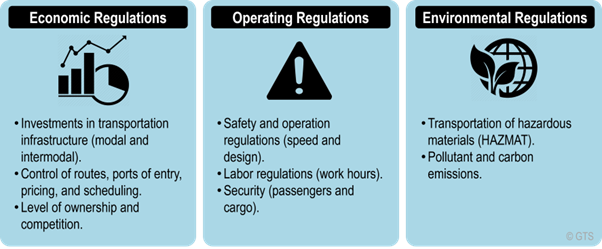
2.4.6 Fare Regulation and Affordability
Regulations related to fare structures and adjustments impact the affordability of bus transportation for passengers. Government oversight on fares helps prevent excessive pricing and ensures that bus services remain accessible to the general public. Fare regulations also support social equity by providing affordable transportation options to various segments of the population.
2.4.7 Compliance and Operational Standards
Regulations set operational standards for bus operators, including driver qualifications, vehicle maintenance requirements, and adherence to schedules. Compliance with these standards is necessary for bus operators to obtain licenses and permits, ensuring that only qualified and reliable operators are in operation. These regulations promote professionalism, accountability, and consistency in the industry.
3. News
3.1 Expansion of bus networks in major Chinese cities
The expansion of bus networks in major Chinese cities has been a key focus of urban transportation development in recent years. Following are the cities where the expansion of bus networks has been taking place:
1. Beijing
2. Shanghai
3. Guangzhou
4. Shenzhen
5. Chengdu
They are targeting the expansion of their bus networks by introducing new routes, increasing the number of buses, improving connectivity with other modes of transportation, and adopting advanced technologies. The expansion aims to provide residents with efficient, affordable, and sustainable transportation options while alleviating traffic congestion and reducing the environmental impact of transportation. By investing in the expansion of bus networks, these cities are striving to create integrated and multimodal transportation systems that cater to the evolving needs of their urban populations.

3.2 Shift towards greener and more sustainable bus transportation
In response to environmental concerns, there has been a significant shift towards greener and more sustainable bus transportation in China. Cities are increasingly adopting electric and hybrid buses to reduce emissions and promote cleaner air quality. The emphasis on sustainable transportation aligns with China's commitment to combat climate change and promote green development.
3.3 Integration of technology for improved efficiency and passenger experience
The integration of technology in the bus transportation industry has revolutionized operations and improved the passenger experience. Intelligent transportation systems, real-time tracking, and electronic payment systems have enhanced efficiency, reduced waiting times, and provided passengers with convenient travel information. Technological advancements have streamlined operations, optimized routes, and improved overall service quality.
3.4 Adoption of electric and hybrid buses in China
China has emerged as a global leader in the adoption of electric and hybrid buses. The government has provided significant incentives and subsidies to encourage bus manufacturers and operators to transition to cleaner energy options. The widespread adoption of electric and hybrid buses has not only reduced emissions but also stimulated innovation in battery technology and charging infrastructure.
3.5 Innovations in smart transportation systems and connectivity
China is at the forefront of innovations in smart transportation systems and connectivity. Advanced technologies such as artificial intelligence, Internet of Things (IoT), and big data analytics are being integrated into bus transportation systems. These innovations enable real-time monitoring, predictive maintenance, and optimized operations, enhancing efficiency, and improving the overall passenger experience.
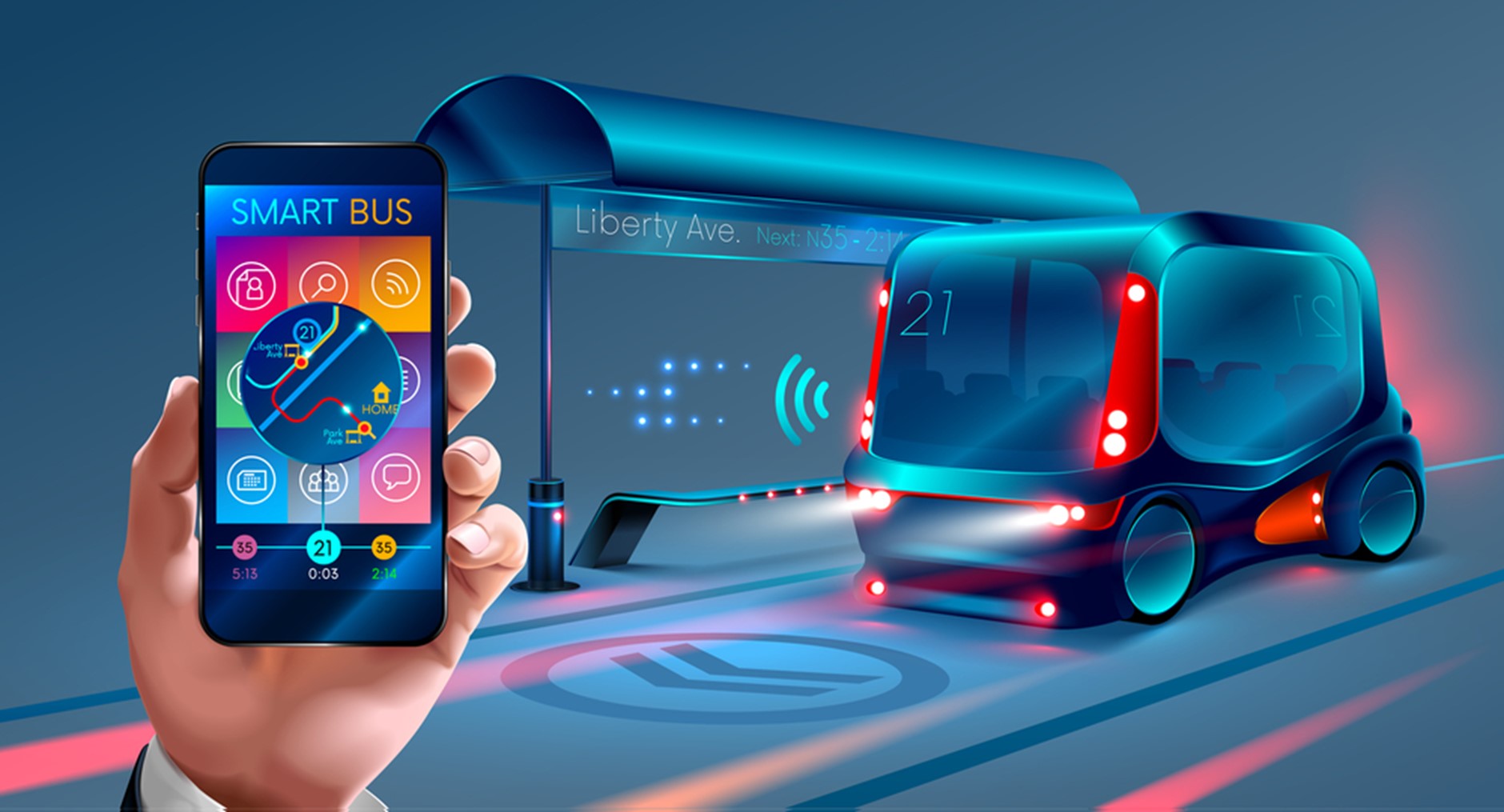
3.6 Addressing congestion and traffic management issues
China's major cities face significant congestion and traffic management challenges. The bus transportation industry plays a crucial role in addressing these issues by providing a more efficient and sustainable mode of transport. Bus rapid transit (BRT) systems, dedicated bus lanes, and intelligent traffic management systems are being implemented to reduce congestion, improve travel times, and promote smoother traffic flow.
3.7 Potential for international cooperation and market expansion
The bus transportation industry in China presents significant opportunities for international cooperation and market expansion. Chinese bus manufacturers have gained recognition for their expertise and cost-effective solutions. Through collaborations and partnerships, international companies can tap into China's vast market and leverage China's technological advancements to foster innovation and market growth in the bus transportation sector.

4. Blog
4.1 Key features and strengths of Chinese bus products
Chinese bus products have gained prominence in the global market due to their key features and strengths. Here are some notable aspects that contribute to the success of Chinese bus products:
4.1.1 Cost-effectiveness
Chinese bus products are known for their competitive pricing, making them attractive to buyers looking for affordable transportation solutions. Chinese manufacturers have established efficient production processes and supply chains, enabling them to offer cost-effective bus products without compromising on quality.
4.1.2 Diverse Range
Chinese bus manufacturers offer a diverse range of products that cater to various market segments and customer preferences. From compact city buses to articulated buses and luxury coaches, Chinese manufacturers provide a wide selection of bus types to meet different transportation needs.
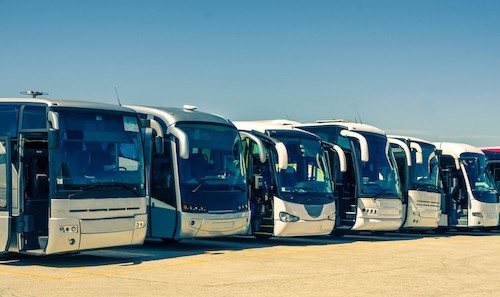
4.1.3 Robust Build Quality
Chinese bus products are known for their sturdy build quality, ensuring durability and reliability even under demanding operating conditions. Manufacturers adhere to strict quality control standards and conduct rigorous testing to deliver buses that can withstand challenging environments and provide long-lasting performance.
4.1.4 Continuous Innovation
Chinese bus manufacturers are constantly innovating and improving their products. They invest in research and development to stay at the forefront of emerging trends and technologies in the bus transportation industry. This commitment to innovation allows them to introduce new features, enhance safety standards, and offer improved functionalities in their bus products.
4.1.5 Global Reach and Scale
Chinese bus manufacturers have established a global presence and supply their products to markets worldwide. Their extensive production capacities and large-scale operations enable them to meet the demand of both domestic and international markets, providing efficient delivery and after-sales services.
4.2 Factors influencing purchasing decisions and satisfaction levels
Below are the factors which can influence your decision while purchasing the bus:
· Cost
· Performance and Reliability
· Safety Features
· Passenger Comfort
· Accessibility
· After-Sales Support
· Environmental Impact
· Reputation and Brand
· Customization Options
· Long-Term Cost Considerations
4.3 Challenges faced by customers
The Bus Transportation Industry in China has been growing rapidly in recent years, and many overseas customers are turning to China to source high-quality buses. However, there are several challenges that overseas customers may face while sourcing.
4.3.1 Language barrier:
One of the most significant challenges faced by overseas customers when sourcing buses from China is the language barrier. Many Chinese suppliers may not have fluent English skills, making it difficult for overseas customers to communicate their needs and requirements effectively.
4.3.2 Cultural differences:
Cultural differences can also create challenges for overseas customers when sourcing buses from China. Chinese business practices and customs may differ from those in the customer's home country, leading to misunderstandings and miscommunications.
4.3.3 Logistics and transportation:
Logistics and transportation can be a significant challenge when sourcing buses from China. Overseas customers must navigate complex shipping regulations, customs procedures, and transportation networks, which can be time-consuming and costly.
4.3.4 Price transparency:
Chinese suppliers may not always provide transparent pricing, which can make it difficult for overseas customers to determine the true cost of the product. In some cases, suppliers may offer low initial prices but add additional charges or fees later in the process, leading to unexpected costs and challenges in budgeting.

4.3.5 Payment terms:
Payment terms can also be a challenge when sourcing buses from China. Some suppliers may require large upfront payments or may not accept common payment methods used by overseas customers. This can create challenges in managing cash flow and may lead to additional costs in currency conversion and transaction fees. It's essential for overseas customers to establish clear payment terms with their Chinese suppliers and ensure that they are comfortable with the payment methods and timing before proceeding with an order.
4.4 Tips for dealing with Chinese suppliers and managing expectations
If you are a new importer trying to do business with Chinese manufacturers, you may initially find the procedure intimidating and even complicated. Here are five crucial pointers to assist you navigate the seas while dealing with Chinese vendors.
4.4.1 Manage FX Risk
To safeguard your profit margins from negative market movements, you must have a comprehensive risk management strategy in place.
There are three basic methods to get started:
o Speak with an expert who can assist you in developing a comprehensive risk management strategy based on your company's needs and objectives.
o Determine your RMB rate to maintain profit margins, consider entering into a forwards contract with a financial solution provider.
o Re-evaluate your risk management plan on a regular basis to keep up with market developments.
4.4.2 Develop Personal Ties Beyond Business
Treating your suppliers as friends and going above and above will strengthen your business ties and facilitate future negotiations. Here are a few examples:
Research their professional, academic, and personal backgrounds; consider long-term relationship building; identify key company decision-makers; and send them greetings for the Chinese New Year or invite them to your nation.
4.4.3 Understand Local Market Practice
While China has been a major source of variety, it is also a difficult market to navigate. Although China has taken numerous measures to expand its international trade, it is critical that you:
o Centralize communications with suppliers, use a local purchasing agent in China.
o Set up your own China office with local employees. Hire Mandarin-speaking personnel in your country to assist with supplier management.
4.4.4 Understand the Impact of Chinese Holidays
A Chinese New Year is a huge holiday that causes a massive closure, which might disrupt your supply chain and cost you more money due to late shipment. So, it's best to schedule your orders so that they don't suffer as a result of the New Year's festivities. It is not recommended to order in bulk immediately before the holidays because demand may increase, resulting in a price increase.

4.4.5 Choose the Right Type of Supplier
Not all Chinese businesses will be factories. There will be actual factories that make and assemble the products, but there will also be trading businesses that function as a broker or middleman between the customer and the actual manufacturers. It is critical to identify who you want to work with because you may wind up dealing with the trading one because they can grasp your requirements well, but they will offer a greater price than the true factory pricing. As a result, you must balance the advantages of dealing with both types before making your decision.
5. Conclusion
5.1 Recap of Key Insights and Findings
The bus transportation industry in China has undergone significant growth and transformation in recent years. The expansion of bus networks in major cities, the adoption of greener and more sustainable bus technologies, and the integration of advanced technologies have played pivotal roles in shaping the industry. Chinese bus products have gained recognition for their cost-effectiveness, technological advancements, and diverse range, while government policies and regulations have influenced market dynamics and operations. The expansion of bus networks in major cities like Beijing, Shanghai, Guangzhou, Shenzhen, and Chengdu has improved connectivity and accessibility for residents. Factors such as performance, safety, passenger comfort, and after-sales support influence purchasing decisions and satisfaction levels. With a focus on sustainability and innovation, the Chinese bus transportation industry is poised for continued growth and presents opportunities for international cooperation and market expansion.
5.2 Recommendations for businesses looking to enter or expand in the bus transportation market in China
For businesses looking to enter or expand in the bus transportation market in China, the following recommendations can be helpful:
5.2.1 Market Research
Conduct thorough market research to understand the demand, competition, and regulatory landscape in the specific regions of interest.
5.2.2 Partner with Local Companies
Establish partnerships or joint ventures with reputable local companies to navigate the market, leverage their expertise, and build strong relationships with key stakeholders.
5.2.3 Focus on Sustainability
Emphasize sustainable and eco-friendly solutions, such as electric or hybrid buses, to align with China's environmental goals and capitalize on the growing demand for green transportation.
5.2.4 Adapt to Local Preferences
Customize bus products and services to suit the specific needs and preferences of Chinese customers, including factors like seating arrangements, comfort features, and technological integration.
5.2.5 Embrace Technological Advancements
Integrate advanced technologies, such as intelligent transportation systems and connectivity solutions, to enhance operational efficiency, passenger experience, and fleet management.
5.2.6 Provide Excellent After-Sales Support
Offer reliable after-sales support, including spare parts availability, maintenance services, and training, to build trust and ensure customer satisfaction.
5.2.7 Stay Abreast of Regulatory Changes
Keep track of government policies and regulations governing the bus transportation industry to ensure compliance and adapt strategies accordingly.
5.2.8 Build a Strong Brand
Establish a strong brand presence through marketing initiatives, showcasing product features, safety standards, and the company's commitment to quality and customer service.
5.2.9 Develop Long-Term Relationships
Nurture long-term relationships with clients, operators, and suppliers to foster trust, loyalty, and a strong network within the industry.
5.2.10 Stay Agile and Responsive
Adapt to market dynamics, evolving customer needs, and technological advancements to remain competitive and seize opportunities for growth in the dynamic bus transportation market in China.

